This nicely priced hybrid package with its neat case, cool bass and a welter of accessories is well worth checking out.
There’s a guy at Head-Fi who owns the 64 Audio Fourte, Astell&Kern SP1000, and Effect Audio Horus. I should know, I’ve peeked at his inventory many times. Last year, another Head-Fi user bought the Empire Ears Zeus, AK380, and PWAudio 1960s in one painful sitting.
Top-of-the-line earphones change from year to year, but there’s always a ready market for them. Some Headfiers are no-nonsense, starting and ending at the pinnacle, never looking down. I should probably be asking them how they make money rather than spending time writing reviews, but here we are.
What they might not know is there’s a vibrant budget scene bubbling underneath, with quick-and-dirty DAPs and IEMs (ok not that dirty) that get the job done at a fraction of summit-fi price tags. Their voices are heard more and more, but FiiO has always been at the forefront of this movement. They have a ubiquitous presence here, being a value-for-the-dollar brand for portables, and with an extensive product range that would make boutique makers green with envy.
FiiO has recently started taking its IEMs very seriously and is now knee-deep in hybrids. The company’s F-series (which stands for FiiO, and not you-know-what) has been successful with the range-topping F9 Pro, which has a detail-oriented sound. Today we’ll be looking at the first IEM of another, hopefully, more fun-oriented series, the FiiO FH1. The FH1 is a dual-driver hybrid monitor with a 10mm titanium diaphragm dynamic driver for the bass region, and a Knowles BA driver handling the mids and highs.
It currently retails for less than US$100 and is available at:
I would like to thank Lily of FiiO for the review sample, and the opportunity to review this monitor despite my limited experience. And also my wife for the review photos.
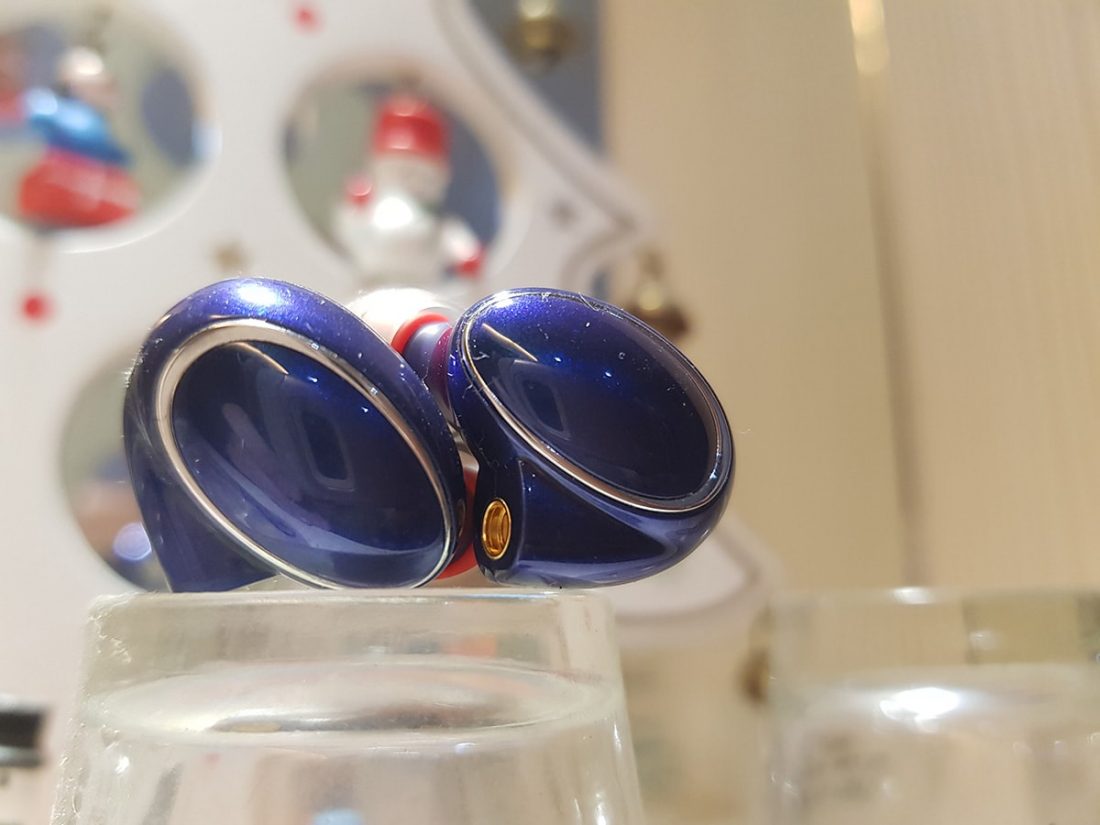
- Class-leading mids tuning
- natural signature with good timbre
- bass extension
- robust build quality
- classy design, ergonomic fit
- two cables provided
- price
- Overwhelming bass at times
- soundstage depth and layering
- treble extension and air
- detail and resolution
- MMCX connectors
Equipment Used:
DAP
- Sony NW-WM1A “K” Modded, FW 2.0
IEMs
- FiiO FH1
- FiiO EX1 2nd Generation
- VSonic GR07 37th Anniversary Edition
- KZ ZS10
Albums Listened
- Amber Rubarth – Sessions from the 17th Ward
- Art Pepper – Modern Jazz Classics
- Beck – Sea Change
- Daft Punk – Random Access Memories
- Ed Sheeran – Divide
- Fleetwood Mac – Rumours
- Macy Gray – Stripped
- Of Monsters and Men – My Head is an Animal
- Radiohead – OK Computer
- Sade – Soldier of Love
- Taylor Swift – Reputation
Packaging and Accessories
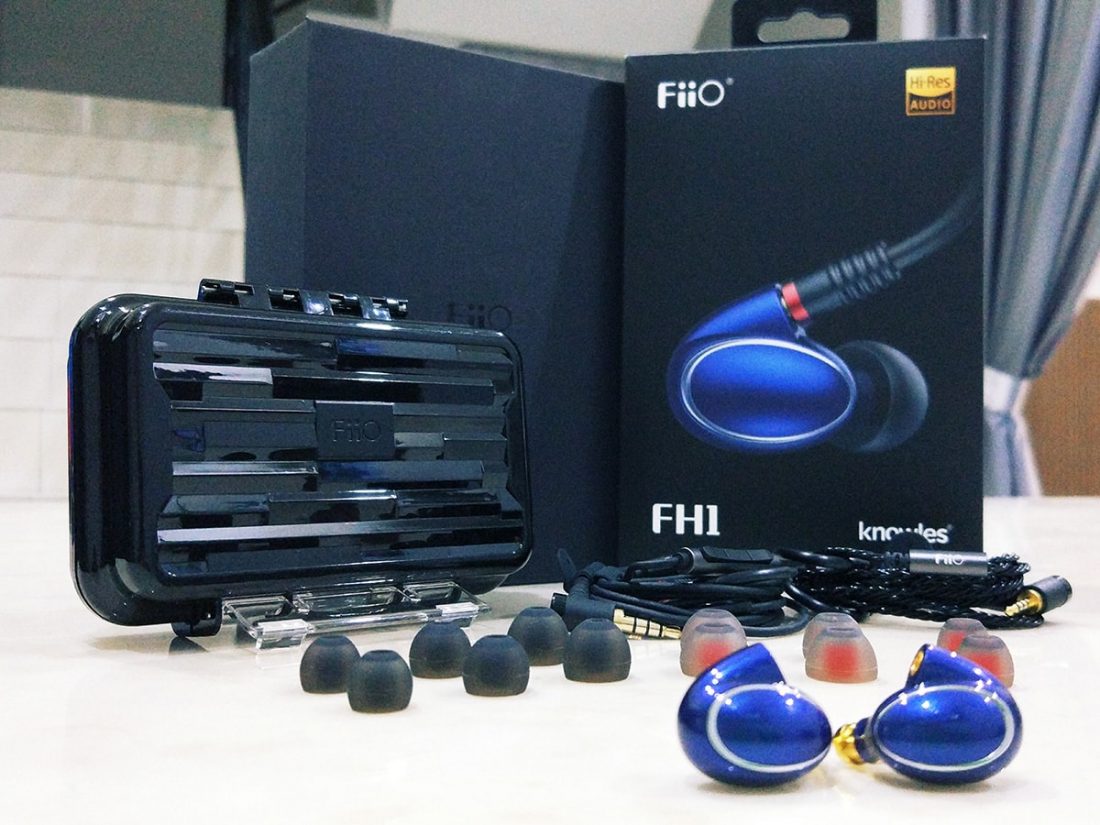
To me, good product packaging should either be extravagant or with understated class. Despite the budget-fi price tag, FiiO has managed to keep things dignified. A matte-black cardboard box invites you to open up and give the goods a look. Mmm.
Mini-Pelican
The all-black waterproof hard case resembles a mini-pelican. There’s some padding inside to keep your IEMs snug, and just enough room for the FH1 and its two cables. It’s sturdily built and inspires confidence; in fact, it’s so good, I’ve bought a few separately for my other IEMs.
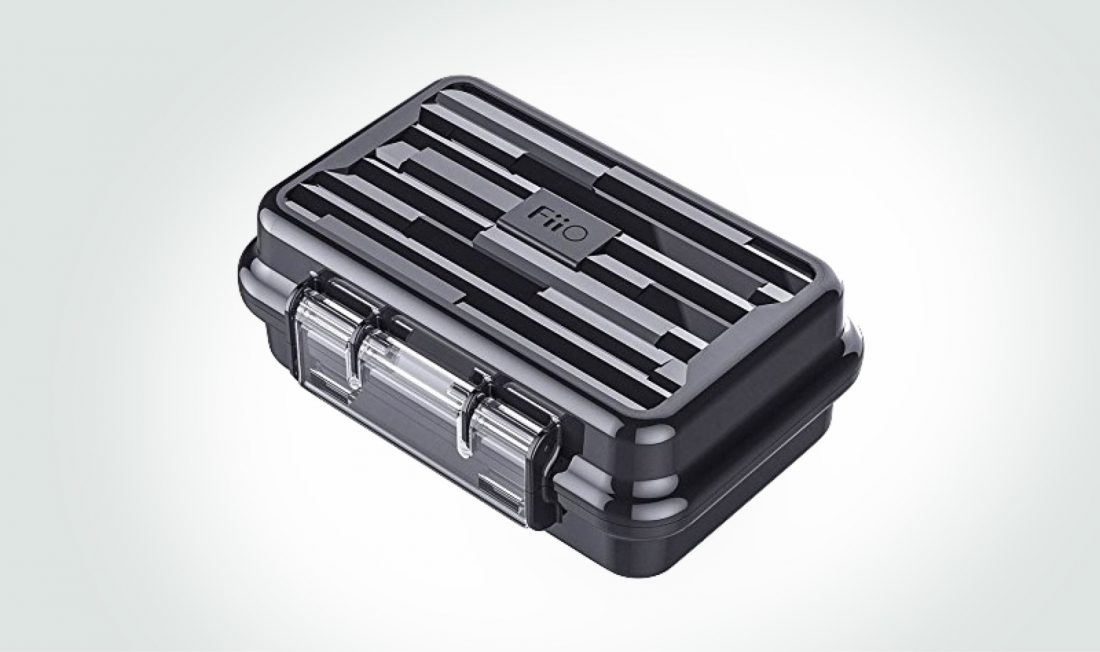

As mentioned, you get two sets of cables: a 3.5mm single-ended cable with microphone and in-line controls, and a clearly superior braided 2.5mm balanced cable, meant to be paired with FiiO DAPs no doubt. Rounding off the accessory set are two sets of silicone ear tips in three sizes (S, M, and L); all-black tips confer a balanced sound, whereas red-stemmed tips provide more bass.
Design, Build Quality, and Cables
Colors
The FH1 is available in 4 colors which were rolled out gradually, starting with black, then blue, red, and green. The colors won’t elevate you to geek god status, but look quite alright. They are going for a classy look after all. The chrome trim, glossy nano-coated plastic housing, and brass nozzles all point to a sleek and understated design that I fully endorse.
Concerns about the MMCX Connector
Build quality is solid and looks robust enough to stand the test of time, bar the MMCX connectors, where the jury is still out. According to the Head-Fi thread, the black FH1 had a few teething issues like the sound cutting out from one channel, likely due to the MMCX connectors. I am, however, glad to report that my blue unit has not run into any blue-ball issues throughout its four months of use.
As mentioned, two detachable cables are provided. The standard 3.5mm cable is basic, with a microphone and in-line controls for volume, play/pause, and next/previous track. The angled jack, cable wrap, and strain reliefs are nicely made, and while the rubberized cable has a good hand-feel, I can’t help but think a hard yank or minor accident might put an end to it. FiiO obviously put in more man-hours on the 2.5mm balanced cable. The cable is upgraded using silver-plated copper in a 4-wire braid. It looks premium, especially next to the (poorer) standard version.
Build quality and sound quality: a veritable step up.
Using an adapter to pair with my Sony DAP (which has 4.4mm balanced output), the sound benefits from more background black space, leading to better differentiation of instruments and vocals, more apparent detail, and a more spacious presentation. If you have a DAP with balanced output, by all means, use the 2.5mm cable and never look back.
Fit, Isolation, and Comfort
It’s no secret that I love bean-shaped IEMs, so there is certainly bias on my part. I’ve used and loved the SE846, Pinnacle P1, SM64, Galaxy V1 and the shape largely agrees with my ears. Its comfort and ergonomics are second to none (barring customs), and the best part is I can lie on my side while listening. Why?
Same story with the FH1 – I love the fit and comfort, absolutely nothing to fault. Isolation is average; you hear some outside noise unless you crank the volume to unhealthy levels, but this is more or less a given with universals.
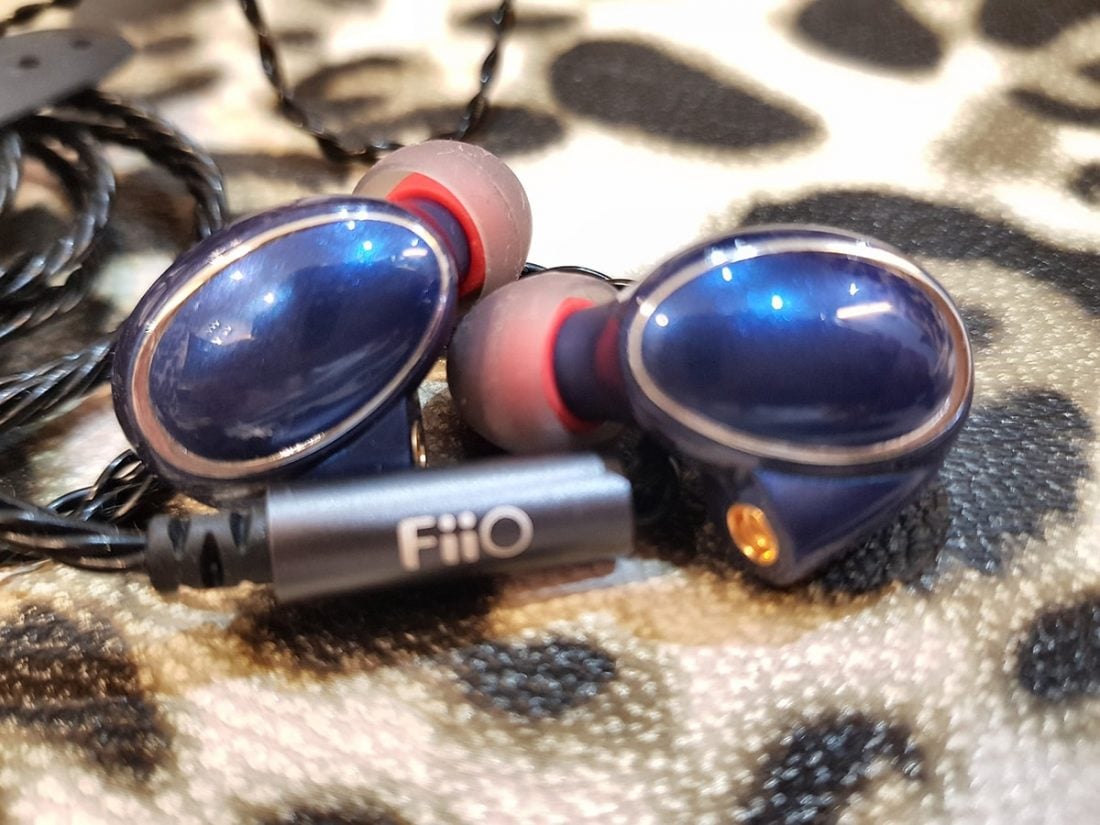
Sound Quality
Critical listening was done after 100 hours of burning in. It wasn’t recommended by anyone. I just thought the titanium dynamic driver could use some exercise. The good news is the sound didn’t change before and after burn-in, so you can thank me and save 100 hours.
Setup
The main setup used was Sony WM1A “K” Modded (low gain and Direct Source on) > 4.4mm to 2.5mm adapter > balanced stock cable > FH1. My favorite ear tips for FH1 are the Mandarines Symbio N, which provide excellent bass response and detail levels. Stock, all-black tips come a close second, giving me a nice balanced sound with better comfort levels than the Symbios, which tend to put weight on the ear canals after an hour of use. Spinfits improve on comfort, but bass tends to be overwhelming and fuzzy, so it’s back to Symbios. I’m not a big fan of the red-stemmed bassy stock tips either.
Overall Sound Signature
The FH1 is a warm monitor, with abundant bass, which sometimes impedes into the mids, while the mids hold their own with a deftly natural tone that’s a joy to listen to. I’ve noted some shrill, brittle treble in past FiiO IEMs, but not in this case. The treble is pleasant and smooth, with some shimmer for excitement. I’ve played recordings of various quality with them, and the FH1 veers on the forgiving side. No ear-splitting treble to be found here, good news for those who found the F9 Pro too detailed. While warm/smooth IEMs are a dime a dozen nowadays, what FiiO has accomplished with the FH1 is remarkable.
The mids and treble tuning are very coherent and among the best I’ve heard in this price range. It is not shackled by the need to unearth every detail in the recording, nor does it aspire to give you headphone-like, out-of-head spaciousness. What it does achieve is a natural timbre and tone that skews towards realism. That is the FH1’s claim to fame in this cut-throat sub-US$100 hybrid category. The bass is the troublemaker here, and I’ll talk about it very soon.
Bass
Oh, here we are. The FH1 has what I call a working-class bass. The working class knows there is no shortcut to success, and to earn more, you have to do more than your share of work. See where I’m getting at?
The FH1 bass pounds and grinds like its next paycheck depends on it.
It’s not a beautiful, light-footed, fluttery bass with air for miles. It believes that more work will get done with an excess of power and grunt, and is not afraid to get down and dirty. For the most part, it’s a load of fun. The sub-bass goes down to rumbly, satisfying, head-throbbing levels; moving wafts of air to the listener’s ear. The midbass is undoubtedly raised as well, with a keen sense of rhythm. The notes are thick, impactful, well-rounded, and warm, but on the flipside lack detail, texture and speed. So, on tracks busy with detail and layers, where speed is a must, it plods through and congests the stage. It’s also guilty of encroaching unapologetically into the lower mids at times. Gritty work… is not pretty.
What you have is an unmistakably dynamic driver bass that is proudly showing off of its status as the workhorse of the signature, the driving force. As I said, not a pretty sight, but it gets the job done. And mostly in excess.
Mids
Opposites attract, and the beautiful, angelic mids somehow find themselves next to the plucky, devil-may-care bass – like in tabloids when you see a stunning model walking hand-in-hand with someone dressed like a greasy hobo. Stunning.
The lower mids inherit some power from the midbass, lending note richness and warm euphony to cellos, bass guitars, and male vocals. They sound meaty, each note gorgeously fleshed out from attack to decay. The highlight, however, is the center-to-upper mids.
They straddle (heh) a fine balance between detail and organicity, sounding alive and realistic. The note weight is average, not too limber and wispy, and never too bogged down, with trace amounts of air around each note.
When not intruded upon by the bass, the mids are positioned slightly forward, asking for your polite attention to focus on every note as it is rendered. Its timbre is lifelike in essence and accomplished in note texture. Truly wonderful. Female vocals, woodwind, strings, every instrument that desires the center stage is a delight to listen to. How about weaknesses? If the mids had been airier, to better define each note, it would have been splendid.
Available on Amazon: “FiiO FH1”
Treble
A monumental undertaking is often tasked with able and dependable hands, to one whose work is valued for its consistency. Kinda like Thor. Treble extension is not stellar, with the signature lacking some much-needed air in the upper treble region. The treble speed might also be a weakness as it won’t be able to keep up with faster, demanding tracks.
Smooth as Buttered Silk
But what FH1 accomplishes with what it’s given is quite commendable. The treble is the stable rock of the signature. It is even, totally devoid of harshness or peaks, and smooth as buttered silk. Continuing upwards from the mids, notes are again average in size and thickness, veering towards naturalness over detail levels.
Realistic Tone
As for tone, there is nothing to fault, just a realistic tone all day and night. Position-wise it takes a back seat to the mids and bass but makes its presence felt with a nice shimmer and excellent note decay. Cymbals and hi-hats, among other things, benefit from this and do not suffer from any graininess or tizziness. Sacrificing a bit of dynamism and excitement, the treble serves the warm and smooth signature as a whole, sounding astoundingly coherent as a result.
Soundstage and Imaging
Good Width
The FH1 has good width, and correspondingly, left-to-right separation is very capable. Center imaging is positive as well, where the vocalists take center stage and command your attention. Listening to binaural albums like Amber Rubarth’s Sessions from the 17th Ward, I was taken aback by some height thrown in for good measure. So far, so good.
Lack of Soundstage Depth
Where it stumbles is in soundstage depth; layering and instrument positioning on the Z-axis is lacking. There is just enough depth to discern some positional cues from front to back, and not having the music slice across my head is always welcome.
Most of the imaging cues are from left to right, some above and below ear level, but rarely in front of and behind the ears. As for separation, overall the stage is clean, with enough black spaces between instruments. However, sometimes the bass rears its head and congests the stage, throwing its weight around like a hefty guy in an all-you-can-eat.
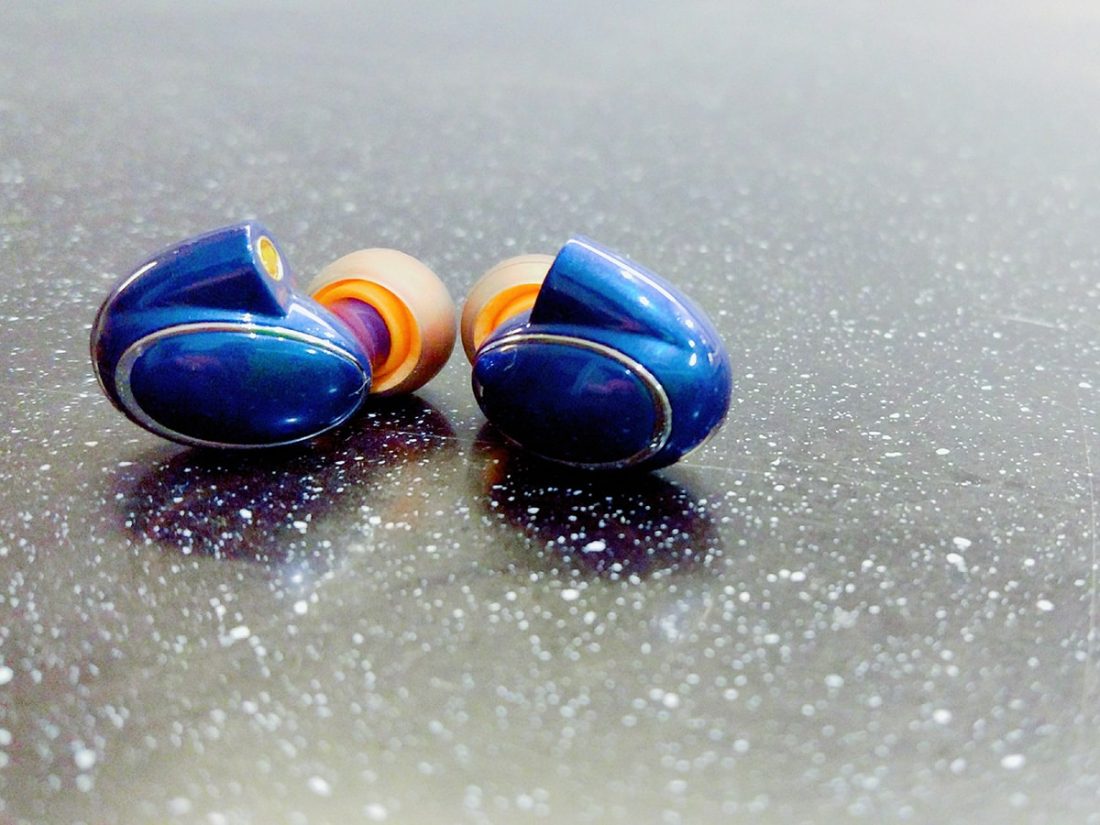
Comparisons
KZ ZS10
KZ brought some big (budget) guns to join the driver wars. Steadily increasing their driver count and prices, they hope to be considered more than just a cut-and-paste brand. The ZS10 is a 4BA + 1DD hybrid for your consideration.
More V-shaped
Right off the bat, the presentation is different, with the ZS10 more V-shaped. Vocals are recessed compared to FH1, with notes sounding thinner and colder. Even then, FH1 extracts more detail and texture in each note, while sounding rich and lush, conveying great depths of emotion. ZS10 aims for a brighter, more exciting signature; however, the treble sounds unnatural and brittle compared to the smooth and winsome FH1.
More Distracting
As for bass, both have their qualities, with FH1 sub-bass-focused while ZS10 brings more midbass. As a result, FH1 is more visceral and rumbly, while the ZS10 midbass is bloomier and sometimes more distracting to the overall signature.
Deeper Soundstage
For soundstage properties, FH1 is wider, but ZS10 surprises by being a touch deeper. Imaging ability is similar. Signature-wise, ZS10 is somewhat incoherent, with the thick warm bass contrasted with the thin mids and treble, a typical hybrid tuning. FH1 keeps it all together in an immersive musical experience. All in all, FH1 is in another league, but I do hope KZ continue to improve and innovate because I love their prices.
FiiO EX1 2nd Generation
The EX1ii is my favorite FiiO IEM previously with an airy, open, earbud-like sound. Given its age, it can still teach other IEMs a thing or two in this price range. Starting with its greatest strength, the soundstage, separation and imaging ability greatly surpasses that of FH1.
More Width, Depth, and Air
Given its vented build, it’s no surprise that EX1ii has far more width, depth, and air around every instrument. It’s like a relaxing breeze interrupted by music. FH1 claws its way back to contention with its midrange supremacy, easily besting the EX1ii in tone, timbre, euphony, and texture. FH1 has a better-balanced, more natural treble as well, while EX1ii is prone to unnatural peaks and occasional sibilance.
Exciting and Dynamic Sound
Bass has FH1 delivering gut-busting sub-bass goodness, while EX1ii relies on punch and impact that can be heard more than felt. The EX1ii has tighter notes and quicker decay, delivering a more exciting and dynamic sound, compared to FH1’s inviting tone and comparatively intimate presentation. They complement each other well, but I tend to reach for FH1 more often.
VSonic GR07 37th Anniversary Edition
Ever since I was a wee lad, the GR07 has been the go-to for a reference signature on a budget. Little has changed since then, and after about 200 iterations, they arrive at the 37th Anniversary Edition (GR07AE). I’m glad to say it’s my favorite variant, with a warmer, musical presentation compared to the classic GR07, while taming the infamously shrill treble.
Balanced Signature
The GR07AE has a balanced signature. Compared to FH1, it has tighter, quicker bass in lesser quantity, making the FH1 bass sound slow and fuzzy. The mids are neutrally-placed, with leaner and meaner notes. They render more detail than FH1, opting for a reference-like tuning, but still no match for the sheer realism and emotion FH1 is capable of. The GR07AE highs are nowhere as dangerous as GR07 classic but are noticeably brighter and more jagged-edged than FH1.
Similar Soundstage
Where FH1 is in no danger at all of any sibilance, GR07AE does veer towards the border. Soundstage presentation is more alike for both monitors, relying on width and left-right separation to convey space. GR07AE’s leaner notes mean the signature is airier and edges ahead in separation/imaging. Where GR07AE falters is in the sheer absence of depth, with most of the music residing in my brain. I would say that both IEMs are again complementary, offering options for critical listening, and kicking back to relax.

Technical Specifications
- Driver: 1 Dynamic Driver + 1 Balanced Armature
- Weight: 21g
- Frequency Range: 20Hz – 40kHz
- Impedance: 26Ω
- Sensitivity: 106 dB /mW
Final Words
There are more picks in the sub-US$100 category than you can shake your spear at. Sailing on a sea of indecision, the FiiO FH1 provides a package worthy of your attention. Consider the robust build quality, timeless design, fantastic ergonomics, two included cables and generous accessories (really, the hard case is so good it’s no joke).
Now is the winter of our discontent, made glorious summer by a multitude of budget-fi choices.
Add that to an accessible signature that gets the fundamentals correct: properly tuned mids, smooth inoffensive treble, borderline bass-head lows that pull in the crowds, and coherence rarely seen in hybrids at this level. FiiO did a damn fine job and still managed to keep the price at a very respectable level. Applause, applause.
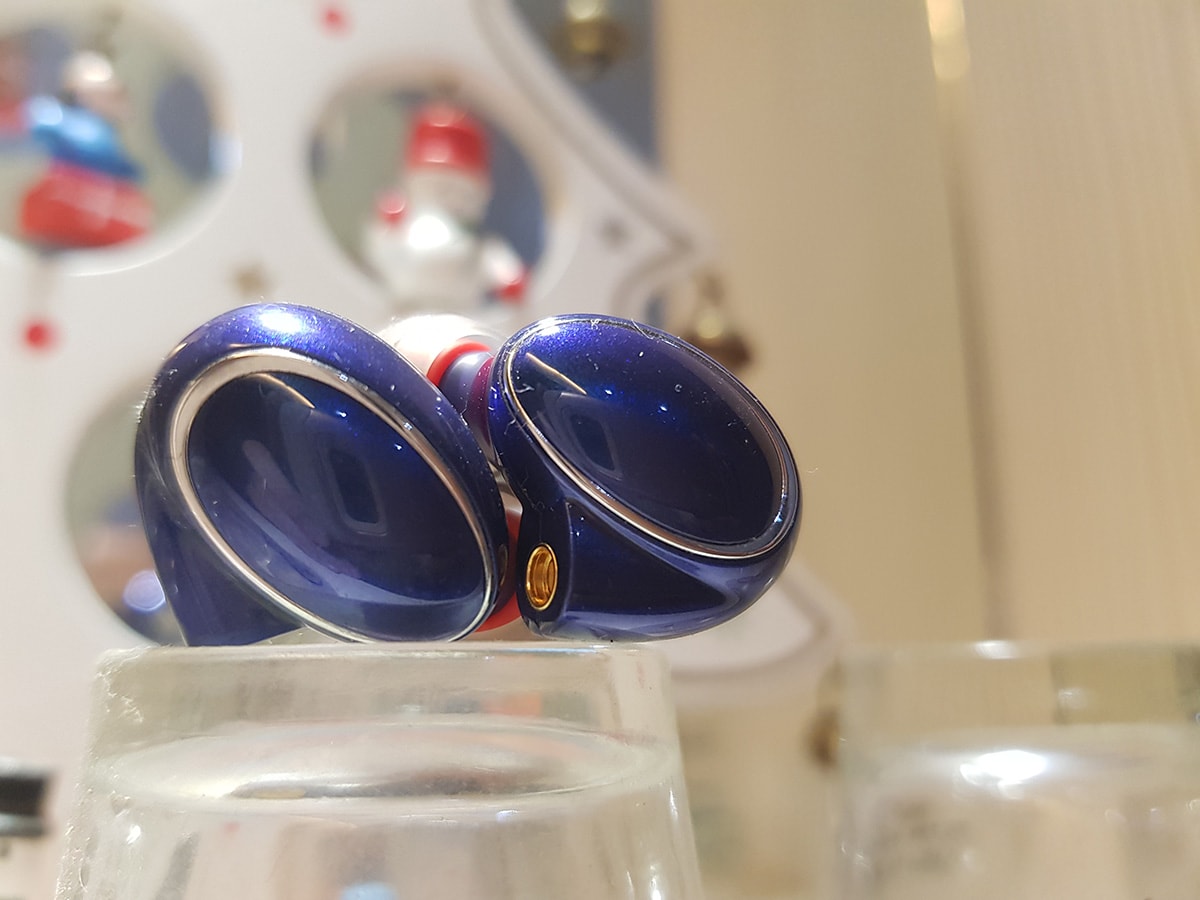
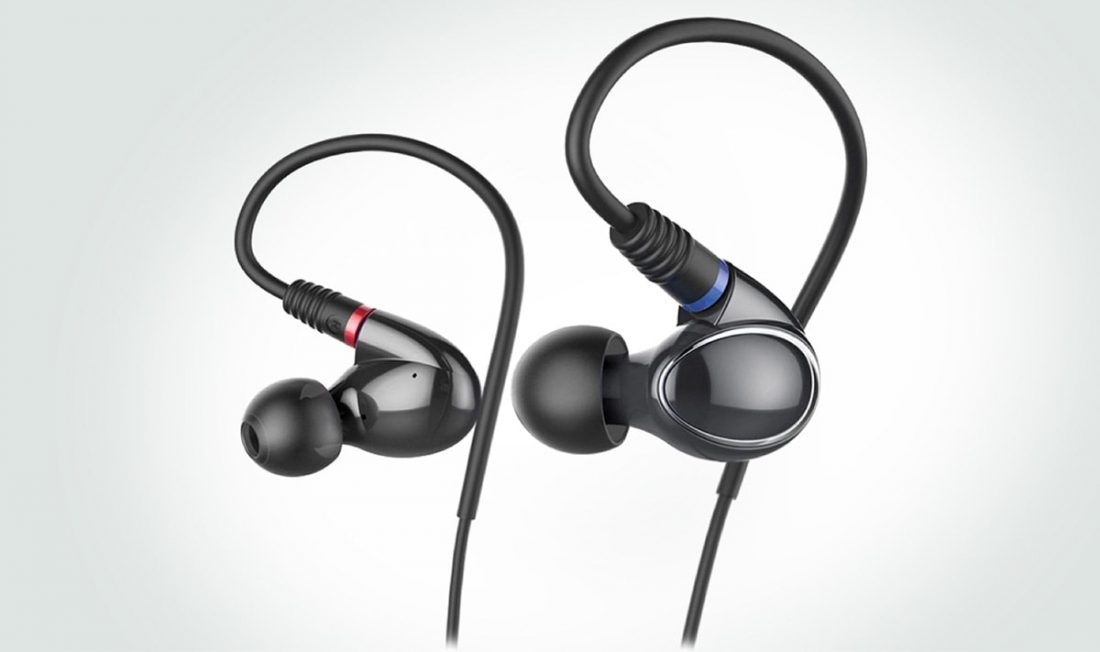
Great review, not boring at all, good choice of words, good on every aspect. Tip my hat
I appreciate your detailed review. I borrowed a pair to compare to my FiiO F9’s. I have my equalization boosted from bottom end to 2000hz to warm up the F9’s. So, I changed my equalization to flat before starting with the FH1’s. Yes, the sound is warm and I’m not at all unhappy with the bass. I find that I had boost 4000 to 10000hz slightly.
I really enjoy the soundstage width and location of the instruments.
The sound is sooo smooth on harmonies. Door’s L.A. Woman rocked me out.
I will be asking Santa for FiiO FH1’s, for sure !!